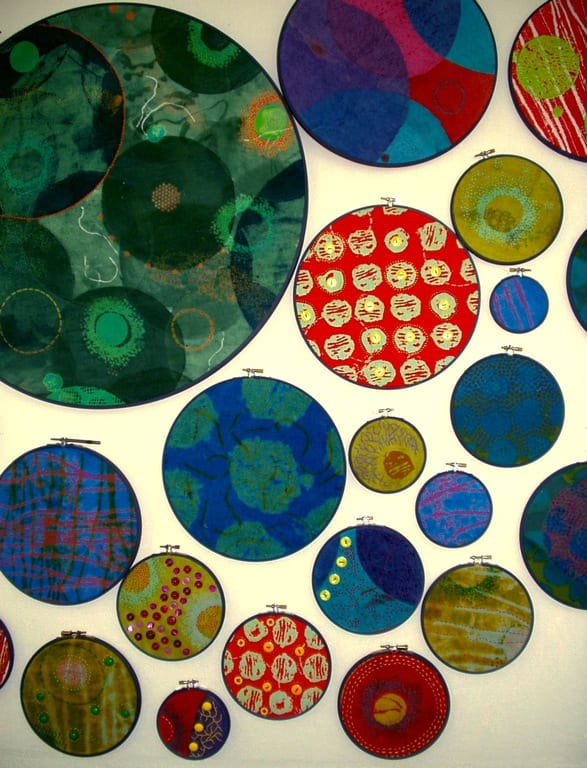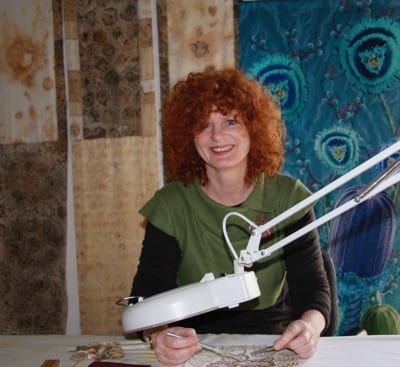
Chromophilia: Julie Ryder
Chromophilia: Julie Ryder
Art intersects with science in Chromophilia exhibition.
It was in a science laboratory that Canberra-based artist Julie Ryder first discovered the processes that have led to an amazing exhibition, Chromophilia, opening at Newcastle’s Timeless Textiles in September.
Chromophilia,from the Greek chromo(colour) and phileo(to love), is defined as an abnormal love of colour and the property, possessed by most cells, of staining readily with appropriate dyes.
Julie, who had previously worked in laboratories, first became interested in chromophilia while researching the use of Scanning Electron Micrographs (SEM’s) in her Master’s work at the Australian National University (ANU) in 2003.
“I was scanning fragments of my dyed fabrics at very high magnification with the SEM,” she explains. “However, the SEM uses electrons, not light, to build up an image on the computer, so I had to learn how to use digital software to add the colour back in.”
This discovery opened up a whole area of research for Julie into what colour was and how it was perceived.
“How were colours changed when they were placed together in various combinations,” she wondered, “were they changed when seen from various distances and are they dependent on the size of the coloured surface?”
In order to translate these concepts into her work with textiles, Julie explored a new technique of printing with dye called ‘chemical resist’. It works on the principle that while printing two different classes of dye onto the same fabric, one will repel the other so that full colour designs can be printed. Julie found the technique overcame the tedious and sometimes impossible method of colour separation that is used in screen-printing.
“By mastering this technique I could then fully explore the questions I posed by working with complimentary contrasts without the fear of my colours turning muddy”, she said. “Most of us know that if we put complimentary contrasting colours together (eg. red and green; blue and orange; or yellow and purple) you hues of brown, grey or black. With this new technique I could print these colours together and still retain their integrity.”
The fabrics Julie printed for Chromophilia are the results of her research. Using images and shapes derived from observations of cells and bacteria under the microscope, she juxtaposes scale and motif to create the pairs of narrow fabric lengths. The larger, more complex cloths use a variety of marks and motifs, building up heavily coloured and patterned textiles.
“I liken this process to that of DNA transference in living things – some motifs and colours appear dominant, whilst others are recessive,” Julie explains. “The combinations of colours in different proportions impart tension within the artwork, which can then be further enhanced or denied by the form it inhabits.”
Her concepts are further developed by embellishing the textiles with stitch and buttons, and using embroidery hoops as a framing device, to infer the process of looking through a microscope and observing form, scale and repetition.
Chromophilia will run from 14 September until 9 October 2016 and will officially open on 15 September.


